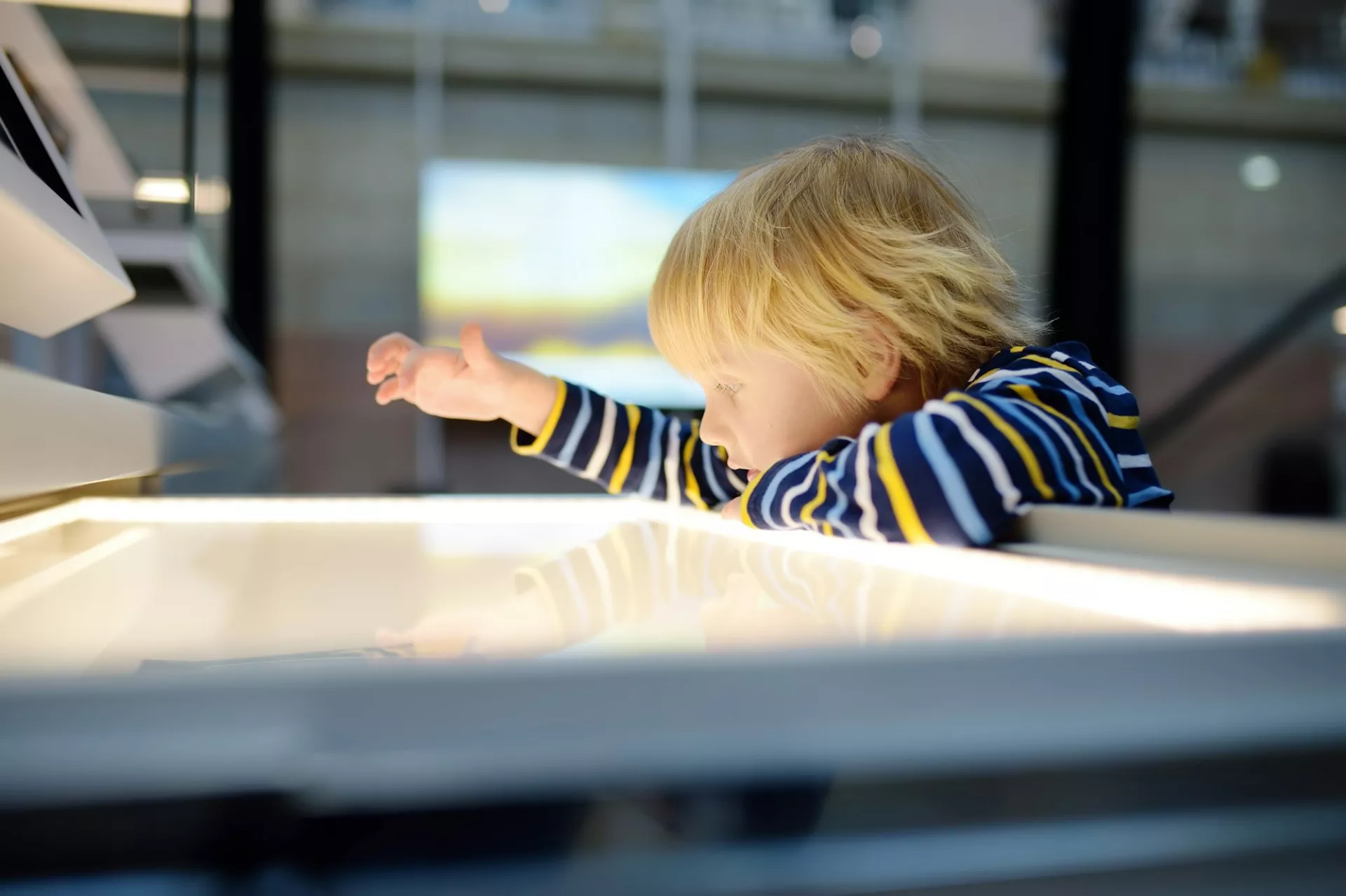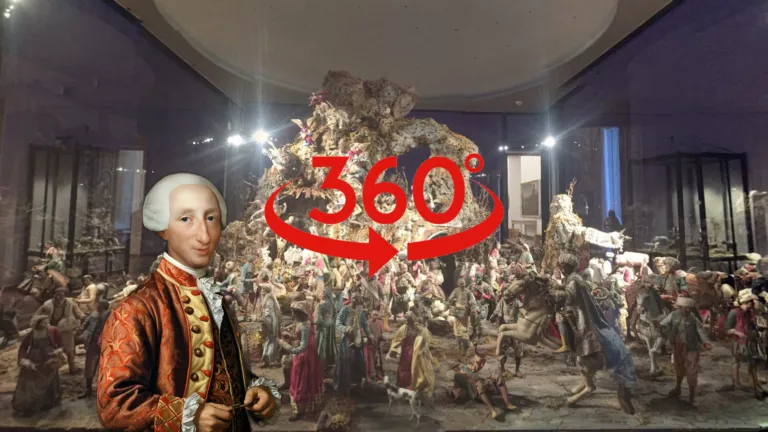Table of Contents
Gamification in the museum environment
The Gamification in the museum context It refers to the application of playful elements and mechanics typical of games in environments that are not traditionally associated with the game, such as museums. This approach aims to make the museum experience more interactive, engaging and fun, thus encouraging public participation and enhancing learning. Through the use of points, levels, challenges, and rewards, gamification transforms the visit into a dynamic experience that stimulates the engagement and curiosity of visitors of all ages.
Using digital technologies such as smartphones, augmented reality and digital platforms, museums can innovatively convey the works of art and monuments within their rooms. The goal is to increase visitor engagement and interest, offering them an engaging and fun experience.
What gamification has to do with culture
Integrating gamification into the cultural context means creating a bridge between entertainment and education, making learning an active and engaging process.
In a museum, where the goal is often to spread knowledge and stimulate appreciation for art and history, gamification can revolutionize the way content is presented and assimilated. Using playful techniques, information can be transformed into compelling and interactive narratives, leveraging emotions and competitiveness in a positive way to increase understanding and retention of cultural information.
The innovative approach of gamification within the cultural sector has revolutionized the way users Interact with cultural heritage. Through the use of gamification techniques, such as treasure hunts or interactive mini-games, the user is involved in a mission within places of culture such as museums, cultural spaces and collections.
The game offers the opportunity to appreciate the museum collections in a fun and cutting-edge way, involving viewers in a digital and multimedia experience. During the visit, the player can unlock puzzles, learn more about the collections, and cooperate with other participants.
How to use Gamification in the world of art and culture
To effectively implement gamification in a museum, it is essential to integrate game elements that are harmonious with the content on display.
For example, mobile apps can be developed that guide visitors through digital "scavenger hunts" or quiz challenges based on specific artworks. Other ideas may include augmented reality to rediscover artwork in innovative ways or point challenges to reward visitors who participate in guided tours or workshops. The goal is to make the experience both educational and fun, encouraging active participation rather than mere observation.
Gamification in museums can draw inspiration from popular games such as Flappy Bird and Fruit Ninja to make visits more interactive and fun. Here are some ideas on how these concepts could be integrated:
Flappy Bird: "Flappy Artifact"
Concept: Visitors can download a smartphone app that uses gameplay similar to that of Flappy Bird . Players guide a flying historical artifact through a series of obstacles representing different historical eras or artistic movements.
Educational objectives:
- Learn about different historical eras and artistic movements through play.
- Increase physical interaction with the various sections of the museum by looking for "checkpoints" to unlock levels in the game.
Fruit Ninja: "Artifact Ninja"
Concept: Using interactive touch screens arranged in various rooms of the museum, visitors can "cut" virtual fruits that represent cultural facts, works of art, or important historical elements. Each cut "fruit" reveals related information or curiosities.
Educational objectives:
- Educate visitors in a fun and interactive way about specific artifacts or works.
- Encourage visitors to visit different sections of the museum to unlock new levels or challenges in the game.
Puzzle Game: "Masterpiece Assembly"
Concept: An interactive game designed to enrich the museum experience, transforming famous works of art into fun puzzle challenges that visitors can solve. This initiative not only increases visitor interaction and engagement but also improves their understanding and appreciation of the works on display.
Educational Objectives
- Visual Learning: The game helps visitors focus on the details of the works, improving their ability to observe. This type of visual learning is particularly effective in reinforcing the visual memory of the works.
- Interaction and Involvement: "Masterpiece Assembly" is designed to be more than just a pastime; It is an opportunity for visitors to actively interact with the works, discussing with each other and sharing techniques for completing the puzzles. This stimulates communication and social interaction within the museum.
- Memory: In an effort to solve the puzzles, visitors pay more attention to the works and the information associated with them, facilitating deeper learning and greater retention of information.
Some examples of Successful museum gaming to inspire you
Gamification in museums has led to the creation of unique and immersive experiences that combine education and entertainment. Here are some notable examples:
Secret Seekers at the Victoria and Albert Museum in London: Launched in June 2017, this mobile game takes visitors on a treasure hunt through the history and buildings of the museum. Guided by eight historical figures from the V&A, players immerse themselves in quiz-based challenges to uncover the museum's secrets and curiosities, making learning an engaging adventure for children and families alike.
MicroRangers at the American Museum of Natural History: This augmented reality game, introduced in 2014, turns a visit to the museum into a mission to save biodiversity. Equipped with an app and a 'Communicator' coin, visitors explore the museum to solve mysteries and combat threats to biodiversity, meeting microbes and augmented scientists along the way to guide them on their missions.
Gen of National Museums Scotland: Released in 2016 in partnership with Aardman, this online strategy game allows players to interact with biomedical objects from the museum, from wooden stethoscopes to modern medical technology. Through a series of 'diagnosis', 'treatment' and 'recovery' cards, players heal a small sick creature, learning in the process the functions and history of medical instruments.
Father and Son from the National Archaeological Museum of Naples: Produced by the MANN and released as the first video game of an archaeological museum, this game tells the story of Michael, who explores Naples and the museum following the traces of a letter from his archaeologist father. The game creates a link between the physical space of the museum and the digital content, offering a new narrative and historical dimension to the visit experience.
The Museum of the World of the British Museum in London: In partnership with Google, this app allows you to virtually explore the museum's entire collection via an interactive interface that connects historical objects to global events. This digital tool transforms cultural discovery into a global and interconnected experience.
Van Gogh Museum in Amsterdam: It uses an interactive role-play to immerse visitors in Van Gogh's life and works, offering a deeper and more personal understanding of the artist. Through this immersive experience, visitors can feel part of Van Gogh's inner and outer world.
These examples demonstrate how gamification can transform the museum visit into a dynamic and engaging experience, attracting and maintaining the interest of modern visitors through the innovative use of technology.
HistoriaVIVA's Gamification solutions
Innovating in the field of gamification, HistoriaVIVA develops smartphone games that transform the museum visit into an interactive and rewarding adventure. Through these applications, visitors are directly involved with the collections and exhibitions, making each discovery a playful and educational moment.
Our games don't just offer simple interaction; They are designed to encourage active and repeated participation. Through reward systems, such as coupons or redeemable loyalty points, we encourage visitors to explore the museum's cultural offerings in depth, increasing engagement and incentivizing future returns.
This gamification strategy transforms learning into a fun and educational experience, bringing a wider audience closer to the rediscovery of artistic and cultural heritage. With HistoriaVIVA, every visit to the museum becomes a unique experience, where culture blends with play to create an unforgettable connection with art and history.
Want to know more? Contact us now.




